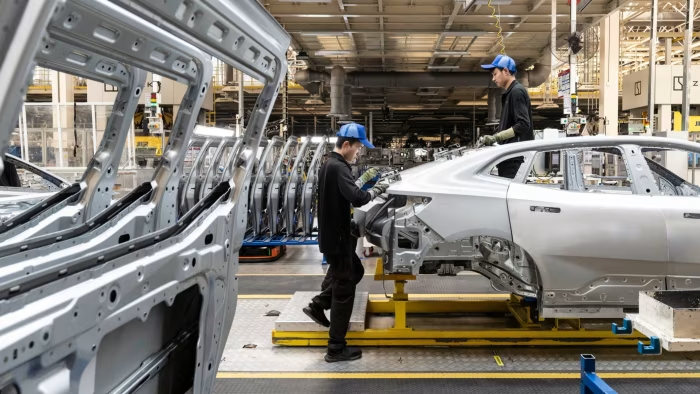Stay informed with free updates
Simply sign up to the Chinese economy myFT Digest — delivered directly to your inbox.
China’s factory activity declined for the seventh month in a row in October on weak domestic demand, complicating the economic outlook for policymakers in Beijing as they grapple with a trade war with the US.
The purchasing managers’ index fell to 49 this month, according to the official data released on Friday, missing the average forecast from analysts surveyed by Bloomberg of 49.6 and trailing September’s figure of 49.8. A reading below 50 represents a contraction in activity.
The results were driven by seasonal factors, such as a weeklong public holiday at the beginning of the month, as well as “a more complex international environment”, said Huo Lihui, chief statistician of the service industry survey centre of the National Bureau of Statistics.
The softer activity comes as China has pledged to step up high-tech manufacturing and increase “self reliance” in science and industry as it pursues a deepening rivalry with the US for economic supremacy.
President Xi Jinping and US President Donald Trump on Thursday agreed to a ceasefire in their trade war at a summit in South Korea, suspending export controls, port fees and some tariff. But analysts believe that the truce will be difficult to maintain given the countries’ deep differences.
China has relied on manufacturing and exports to deliver economic growth in the face of a slowdown in the property market that has undermined household confidence and spending.
Despite the slowdown reflected by the PMI data, which is in its longest continuous decline in more than nine years, activity in high-tech and equipment manufacturing — two sectors prioritised by Beijing’s industrial policies — expanded this month, the National Bureau of Statistics said.
Consumer-related sectors also grew. Beijing has promoted extensive subsidies for consumers in a push to boost domestic demand.
The statistics bureau said the non-manufacturing PMI, which includes construction and services, rose 0.1 percentage points in October to 50.1, indicating an expansion.
This was supported by sectors such as railway and air transportation, accommodation, culture, sports and entertainment. The country had an eight-day national holiday this year starting on October 1 that included the mid-autumn festival, traditionally a period of peak travel and spending.
China’s exports have proved resilient during the trade war, expanding 8.3 per cent in September on a year earlier. But authorities have become increasingly concerned that aggressive competition among producers is driving deflation by pushing down prices.
Policymakers have begun intervening in industries such as electric vehicles and solar panels to try to reduce predatory pricing, but economists worry that doing so could also deal a blow to activity.
The statistics office said new orders in manufacturing, raw materials inventories and the factories employment index declined in October, pointing to depressed activity.
“The official PMIs suggest that China’s economy lost some momentum” in October, said Capital Economics in a note. “Some of this weakness may reverse in the near term, but any boost to exports from the latest US-China trade ‘deal’ is likely to be modest and wider headwinds to growth will persist.”
